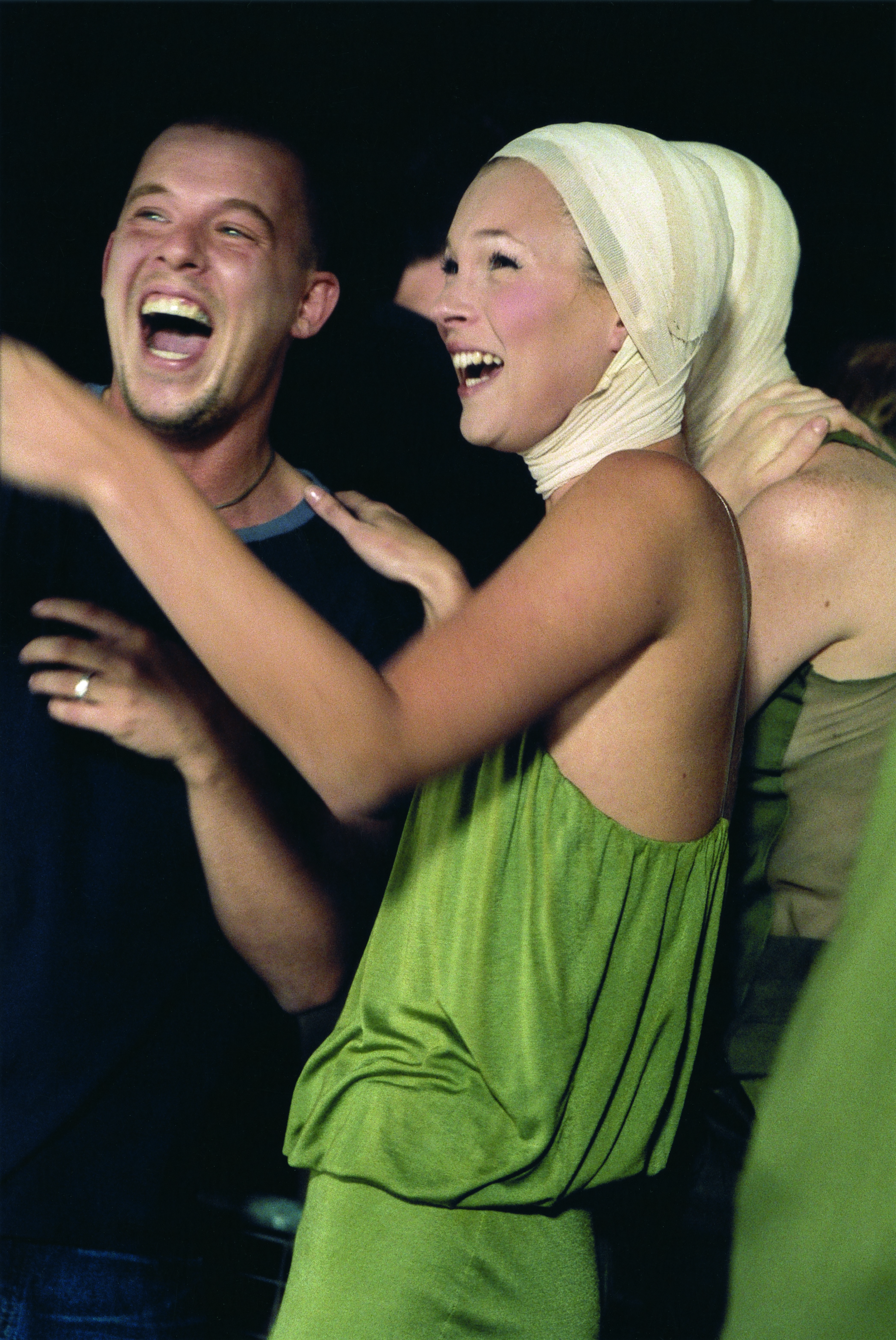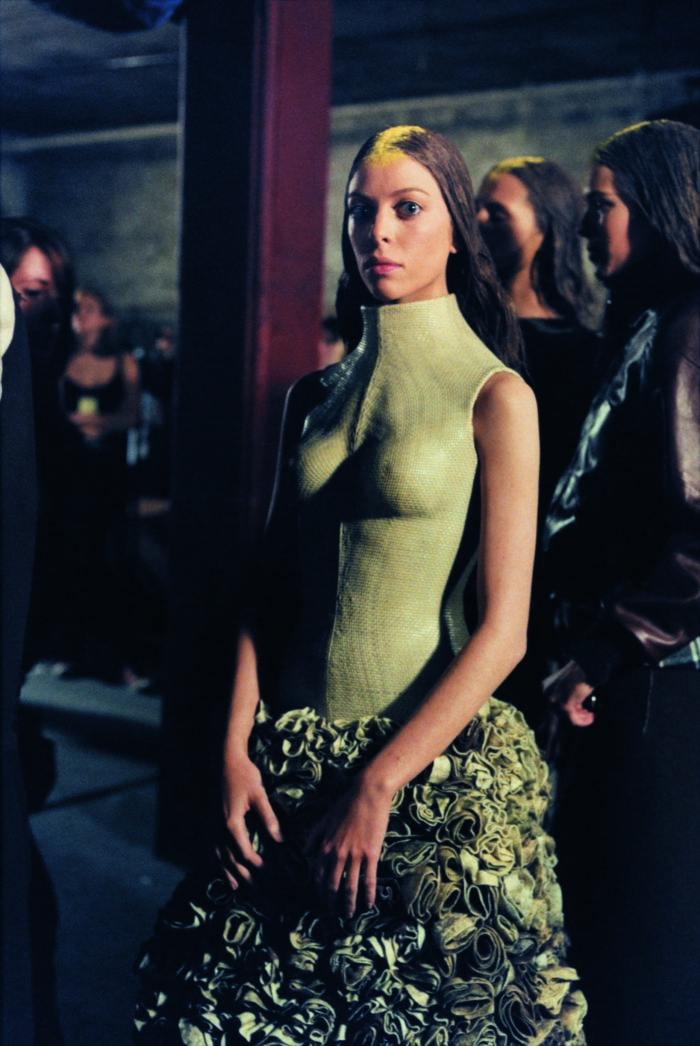
When Lee Alexander McQueen committed suicide in February of 2010, the designer’s final womenswear collection and his swan song, Plato’s Atlantis, flew off the shelves. The commercial success and visibility of Alexander McQueen as brand had reached a peak, one that sadly corresponded with the designer’s own life-ending despair and the shock waves it sent through his friends and family who struggled with the unexpected death of an iconoclast and intimate. This is the story that directors Ian Bonhôte and Peter Ettedgui unpack with McQueen, a new documentary on the late fashion icon.
Working with unprecedented access provided through the first person narratives and video archives of McQueen’s friends and family, the film tells the story of a resilient and romantic genius who used his own dedication and vision to mobilize an entire community of dreamers. In the documentary, the designer’s impact on his collaborators is palpable.
Rather than stay strictly within the world of fashion, McQueen shines a light on the designer not solely as a creative force but as a person facing down the demons of childhood abuse. Surrounded by darkness, one sees a portrait of an artist who walked unflinchingly into trauma in order to pull out beauty truth for others. Here, the directors speak about the newly launched film in their own words.

Where does the film’s narrative structure came from? Peter Ettedgui: McQueen used to say over and over again, “My shows are autobiographical.” So we decided the best way to structure our film was around them. In our minds it was the best way to tell his story. It also enabled us to sort of jump through time. When we introduced a show, it became necessary to talk about some aspect of his childhood or education that then fed that show. So the documentary structure came together very, very quickly.
Were those shows self selecting? What was the criteria for a show being included? PE: We knew we had to have the first and the last shows and then the shows in the middle came from our research. For example, we knew from the beginning that we had to have the Highland Rape show because that was such an important moment for McQueen, but others surprised us. We originally weren’t planning on including the robot collection where the model is painted on the runway, but when we started to talk about the pressure of the fashion treadmill that nonstop dance marathon and the exhaustion of the dancers became a perfect visual metaphor for what we were hearing about Lee’s own state of mind from the contributors.

Tell me about those intermediary images, the animated the skulls which broke up the chapters. Ian Bonhôte: We wanted to create first a visual identity that would persist throughout the film. When making a documentary like this there are a lot of static angles in order to make room for people to speak, but since we were creating a piece about such a dynamic entity we felt a need to create imagery to match. The skulls became a way to inject choreography into the film. The skulls took eight months to create and were made alongside the rest of the film by 3D designers in London. We constantly had to trust each other.
Where did the footage you included come from? IB: There was some low-hanging fruit, but that was all of the sort of stuff people see on Youtube. Obviously when you make a film like this, you want to show people something they’ve never seen before and that portrays your protagonist in a way they haven’t been seen before. This was very important for us. We didn’t want to make a film about an icon. We wanted to make a film about the man behind the legends as it were and we wanted to show him in the most unguarded way as possible. So, some of the personal home movies and things came from our contributors.
PE: Our interviewees often didn’t know they had this sort of material. They would suddenly produce a tape and say, this might be interesting and then we’d find that it contained the most extraordinary material that not even the contributor had seen since it was shot on somebody’s VHS or Super eight camera back in early ’90s. And then other bits of material came from archives scattered all over the world and some of them are quite personal and some of them were more professional. We had to dig around to find a lot of behind the scenes material. It was a process that happened very organically as we made the film. There was never a moment where we were able to kind of go through a whole heap and decide what we were going to use. The archives fed the edit. When we discovered a new gem, it was on one hand rewarding and on the other intensely frustrating because it meant that we had to open the edit and sometimes restructure a whole chapter in order to incorporate the clip. Of course in the end it was a joy to pull the pieces together.

What was it like emotionally to deal with a story that contains three deaths. PE: We always knew the story was going to lead us in that direction and that we were going to have to have a kind of emotional honesty and not try to whitewash anything. It was something we all knew that the film was about.
IB: If you take on a subject like this subject, which has a certain universality, it’s about the human condition. So, what was it like? For us it was frankly very difficult. We had a lot of tears in the interviews and not only from the contributors, but from us as well. We felt a lot of the emotions that various people felt. We realized that we were starting to talk more about mental health issues almost as an overall theme. McQueen really exemplified how many issues young men struggle with from intimacy to success and creativity.
But to go back to your question. It was a very painful film to make. We had a responsibility to our contributors and the Lee they loved. The trust they showed translated into pressure to be accurate. One thing I learned from the process is that the most important secrets to understand can be found examining the scripts of us as human beings.










 in your life?
in your life?

